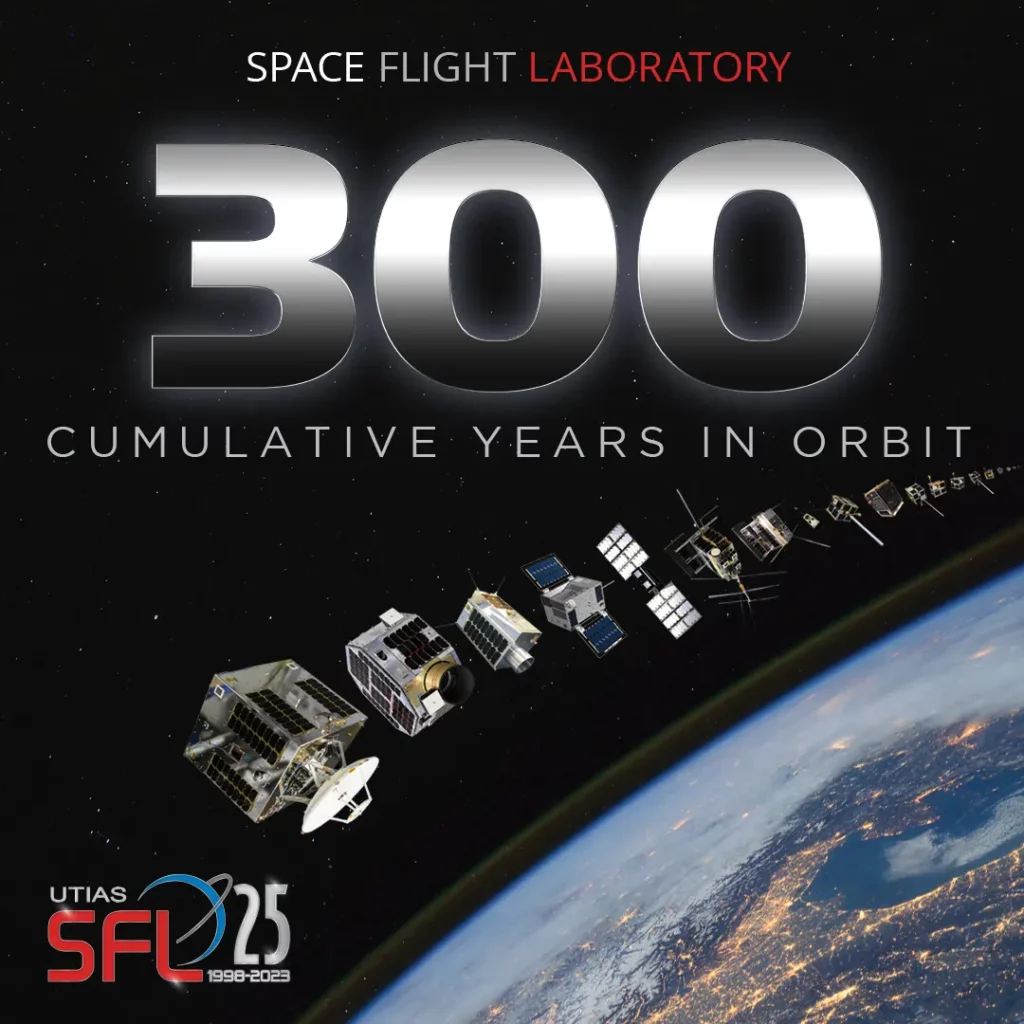Space Flight Laboratory Microspace Missions Mark 300 Cumulative Years in Space

Space Flight Laboratory (SFL) has reached a microspace milestone. The 70 operationally successful nano-, micro-, and small satellite missions it has developed over the past 25 years have achieved 300 cumulative years of on-orbit operations.
“The key to our success in the microspace sector is that we develop low-cost smaller satellites that considerably exceed their design lives and performance goals in orbit,” said SFL Director Dr. Robert E. Zee. “Our satellites have successfully performed complex missions once thought only possible with larger, expensive spacecraft.”
These missions have spanned the full spectrum of traditional satellite applications – Earth Observation, communication, RF signal geolocation, environmental monitoring, ship tracking, space astronomy, and advance technology demonstration. Contributing significantly to SFL’s on-orbit success have been its technological breakthroughs in advanced attitude control and pointing, formation flying, and modular power systems.
In 2023 alone, SFL saw 13 of its spacecraft launched and deployed. These included –
- HawkEye 360 Clusters 6 & 7, based on SFL’s 30-kg DEFIANT platform, are each comprised of three formation-flying, radio frequency geolocating microsatellites.
- Three next-generation greenhouse gas monitoring microsatellites, known as GHGSat-C6, C7 and C8, built by SFL on its 15-kg NEMO platform for GHGSat Inc. of Montreal, Canada.
- NorSat-TD microsatellite built by SFL for the Norwegian Space Agency on SFL’s DEFIANT platform to carry multiple advanced or experimental payloads.
- Commercial communications CubeSats developed using the SFL 6U-XL SPARTAN design for a Toronto-based company.
- LEO 3 demonstration microsatellite for Telesat.
SFL is currently working on development of 26 additional satellites, including six more RF signal detection Clusters for HawkEye 360, the three-microsatellite Gray Jay constellation for Canada, NorSat-4 ship tracking w/low-light imager payload satellite for Norway, and the StarBurst and Aspera small satellites for NASA’s Astrophysics Pioneers Program.
The HawkEye 360 Clusters 8 & 9 are scheduled to launch this year.

